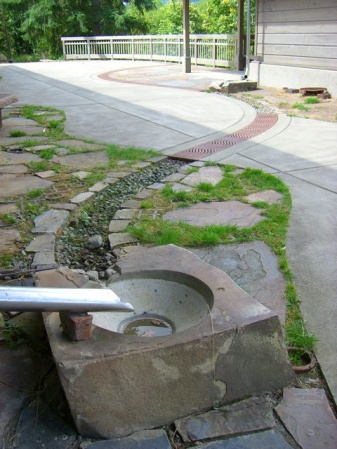Downspout disconnection
Downspout disconnection programs are common in many older urban centers. They require that residents retroactively disconnect their downspouts from the municipal sewer system. This is due to older sewer systems being undersized for the combined flow of sanitary waste and stormwater.
New projects should consider remaining independent of municipal storm sewers from the outset. To prevent flooding and achieve stormwater control, widespread use of small, site scale technologies such as downspout disconnection can reduce the size of shared LID installations.
The Ontario Building Code requires that:
"Where downspouts are provided and are not connected to a sewer, extensions shall be provided to carry rainwater away from the building in a manner that will prevent soil erosion."[1]
<tbody>Recommended strategies to receive downspout runoff include:
</tbody>
| Irrigation technology | Benefits | Disadvantages |
|---|---|---|
| Spray | Maximizes evaporation | Requires higher water quality standard. |
| Drip or capillary | Harvested rainwater is readily used without further treatment Uses less water | Planting medium does not 'wick' water sideways readily, so can lead to localized dry areas |
